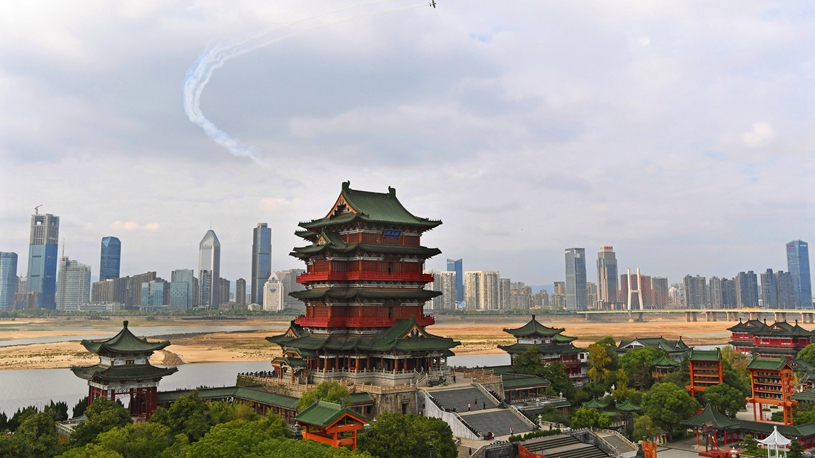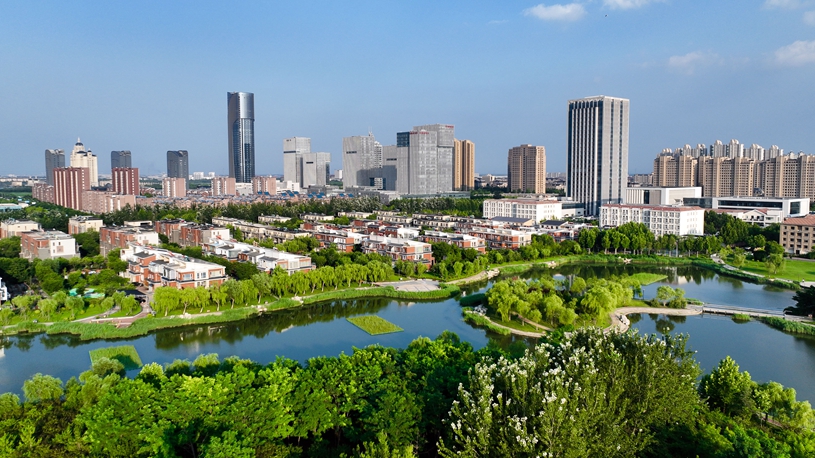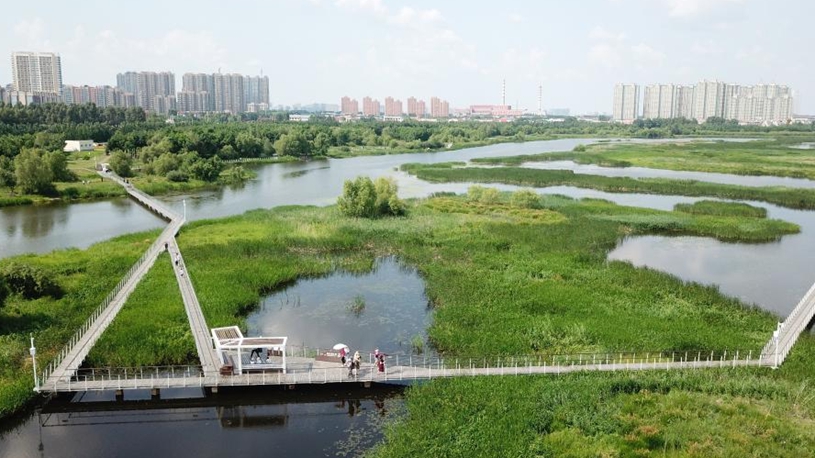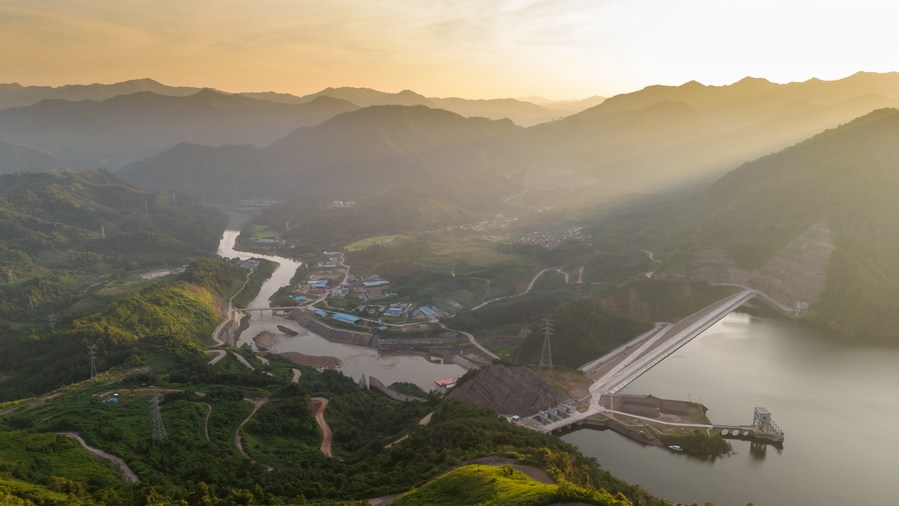
This aerial photo taken on Sept. 27, 2022, shows the Nam Ou 7 hydropower plant of the Nam Ou River Cascade Hydropower Project in northern Laos' Phongsaly Province. (Photo by Kaikeo Saiyasane/Xinhua)
"Phongsaly has developed rapidly in recent years, and the urban infrastructure has taken a new look, which is achieved with the strong support from PowerChina's Nam Ou project," said Governor of Phongsaly Province Khamphoy Vannasane.
by Chanthaphaphone Mixayboua, Zhang Jianhua
VIENTIANE, Nov. 26 (Xinhua) -- The Nam Ou river cascade hydropower project invested and built by the Power Construction Corporation of China (PowerChina) has brought development opportunities to the remote hilly regions in northern Laos.
"I can hardly believe the great changes happening since my last visit to Phongsaly years ago, after seeing the new villages and roads built by PowerChina, and the better-off life of the villagers," a Lao journalist named Latsamy told Xinhua during a recent visit to Phongsaly Province, where four of the seven Nam Ou river cascade hydropower plants are located. "I am grateful and admire PowerChina from the bottom of my heart."
The Nam Ou river cascade hydropower project, developed by PowerChina under the China-proposed Belt and Road Initiative, is the first project run by a Chinese company to win the development rights of a whole river basin overseas.

This aerial photo taken on Sept. 25, 2022, shows the Nam Ou 4 hydropower plant of the Nam Ou River Cascade Hydropower Project in northern Laos' Phongsaly Province. (Photo by Kaikeo Saiyasane/Xinhua)
The Nam Ou project includes seven cascade hydropower plants along the Nam Ou river, which is the largest tributary of the Mekong river in Laos. The project, put into full operation in September 2021, has a total installed capacity of 1.272 million kilowatts and an average annual generating capacity of 5 billion kilowatt-hours.
"We have 71 households and more than 500 people in our Chalern village, and we relocated here in 2016 because of the construction of the hydropower plants," said Chongsengher, the 49-year-old head of the Chalern village in the mountainous province of Phongsaly, some 750 km north of Lao capital Vientiane.
"They (the PowerChina) built houses and upgraded the roads, and now it is convenient for the villagers to travel out of the mountains," he told Xinhua, adding that the arrival of and investment from PowerChina has brightened the development prospects of the village.
"Our village is mostly mountainous with quite little flat land, and now there are roads, as well as a new school and clinic," he said. "In the past, our school had only wooden buildings, but now the Chinese company has built a brick and cement one."
Song Huihong, general manager of PowerChina Nam Ou River Basin Power Co., Ltd., the company responsible for the operation of the cascade power stations, said the project provides reliable power support for Laos' economic and social progress.
"The Nam Ou project adopts the most reasonable plan to minimize the relocation of original residents, minimize the inundation of arable land and forest land, and minimize the impact on the ecological environment," said Song.
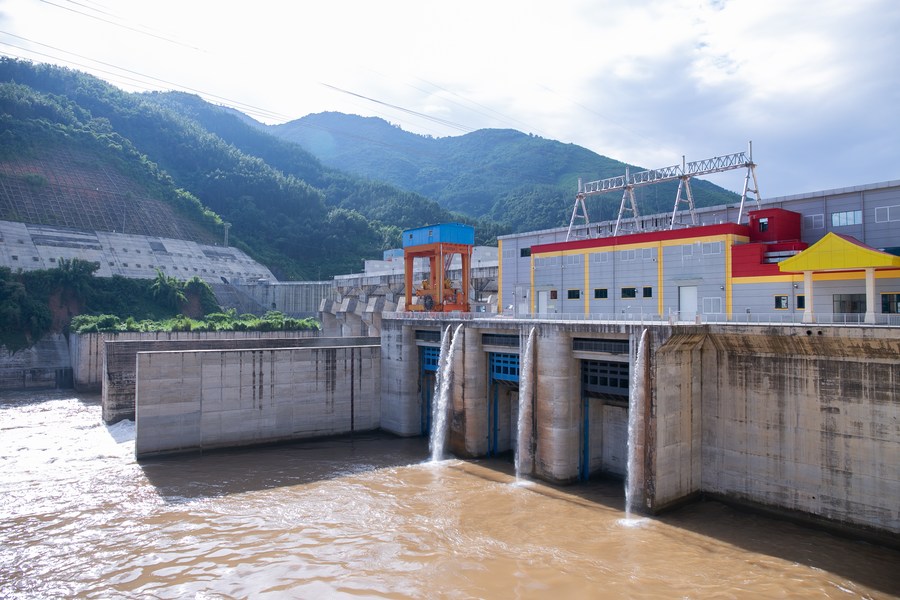
This photo taken on Sept. 25, 2022, shows the Nam Ou 4 hydropower plant of the Nam Ou River Cascade Hydropower Project in northern Laos' Phongsaly Province. (Photo by Kaikeo Saiyasane/Xinhua)
He added that the Nam Ou cascade hydropower project can regulate regional power station groups to ensure the safety and stability of Laos' power grid, and play a positive role in regional water resources management, meteorological resources cooperation, hydropower technology education and training, promoting public welfare and people's livelihood development in the region.
In addition, the Nam Ou river basin hydropower project has built a hydrological monitoring and reporting system covering about 25,000 square kilometers in northern Laos, and cooperated with the meteorological system of China's Yunnan Province to monitor the meteorology, rain and water situation of the basin in real time, which can greatly reduce the impact of possible floods.
"Responsibility comes first in our project, and to ensure local residents' happy life here is our ultimate goal," Song said.
"During the development of the Nam Ou project, we have built 30 resettlement villages and more than 500 kilometers of roads with over 20 bridges," he said.
The local government of Laos spoke highly of PowerChina's cascade hydropower project in the Nam Ou river basin.
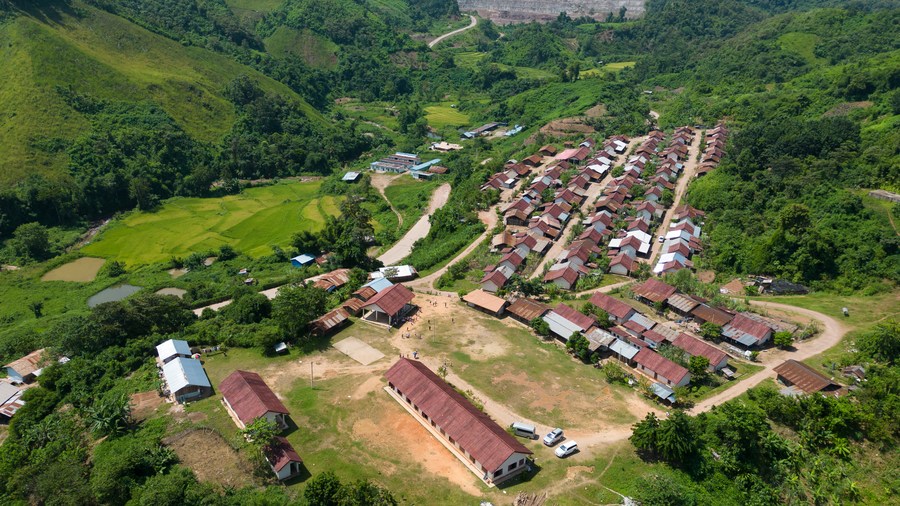
This aerial photo taken on Sept. 27, 2022, shows the new resettlement village near the Nam Ou 7 hydropower plant of the Nam Ou River Cascade Hydropower Project in northern Laos' Phongsaly Province. (Photo by Kaikeo Saiyasane/Xinhua)
Khamphoy Vannasane, governor of Phongsaly Province, said PowerChina has built four power stations in his province, injecting new momentum into the economic and social development of Phongsaly.
PowerChina has also built roads and bridges for local communities, and new resettlement villages with access to tap water, electricity and wharves, which helped local residents improve their production and living standards, he told Xinhua.
"These are good things for the people. Phongsaly has developed rapidly in recent years, and the urban infrastructure has taken a new look, which is achieved with the strong support from PowerChina's Nam Ou project," Khamphoy said.
"PowerChina has done a lot of work to benefit the local people, which is the benefit brought by the China-proposed Belt and Road Initiative and the actual embodiment of the deepening of the friendship between Laos and China."
The Nam Ou river cascade hydropower project has generated over 10 billion kilowatt-hours of electricity as of July 2022. ■







